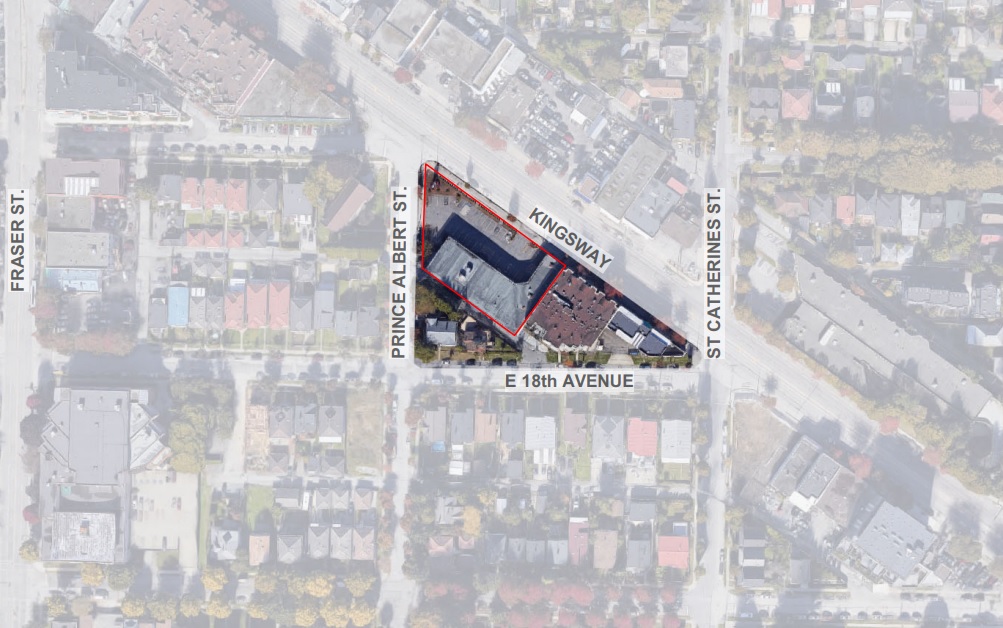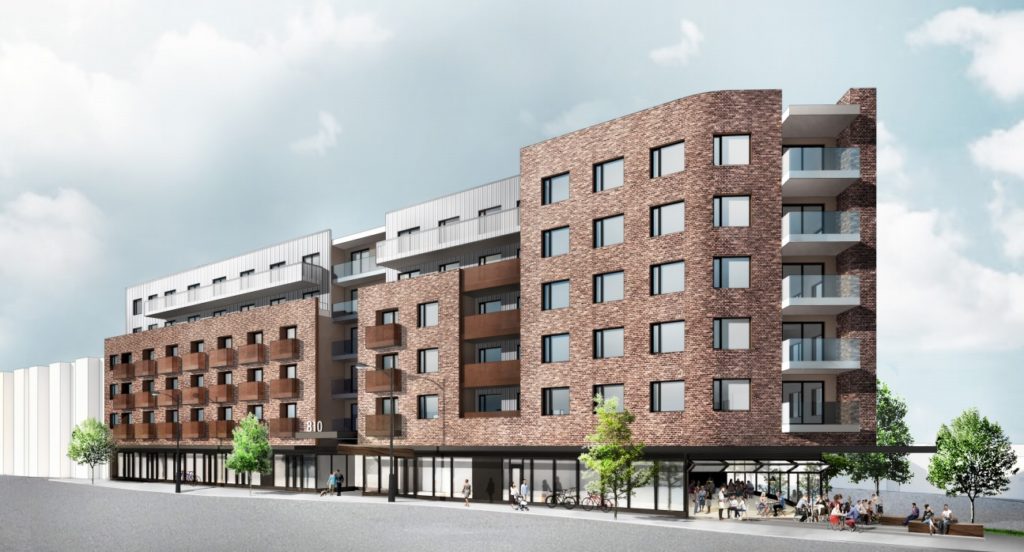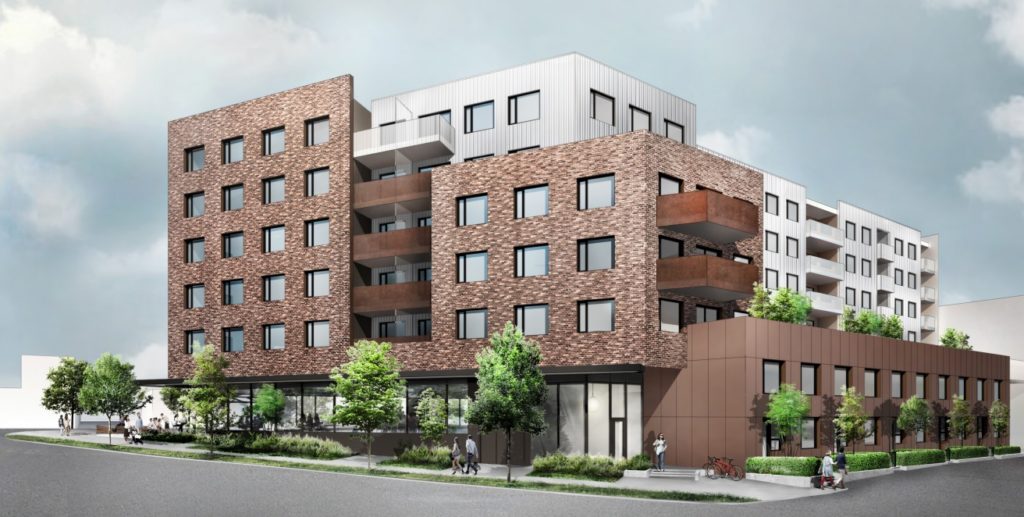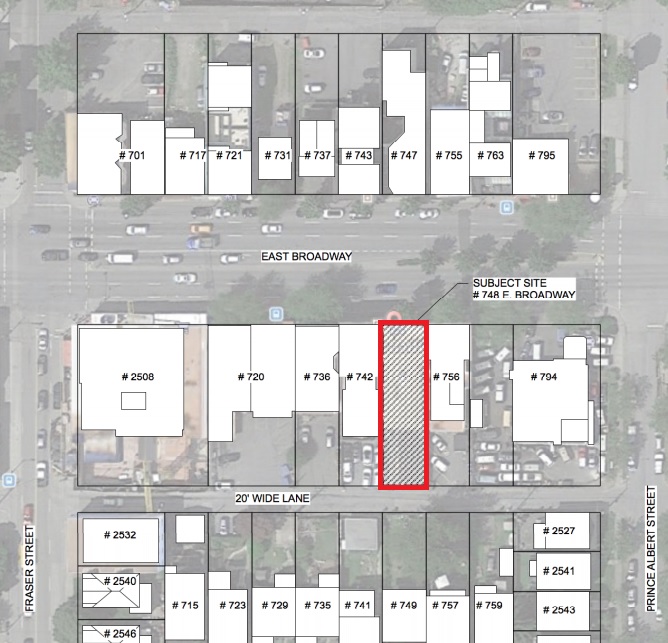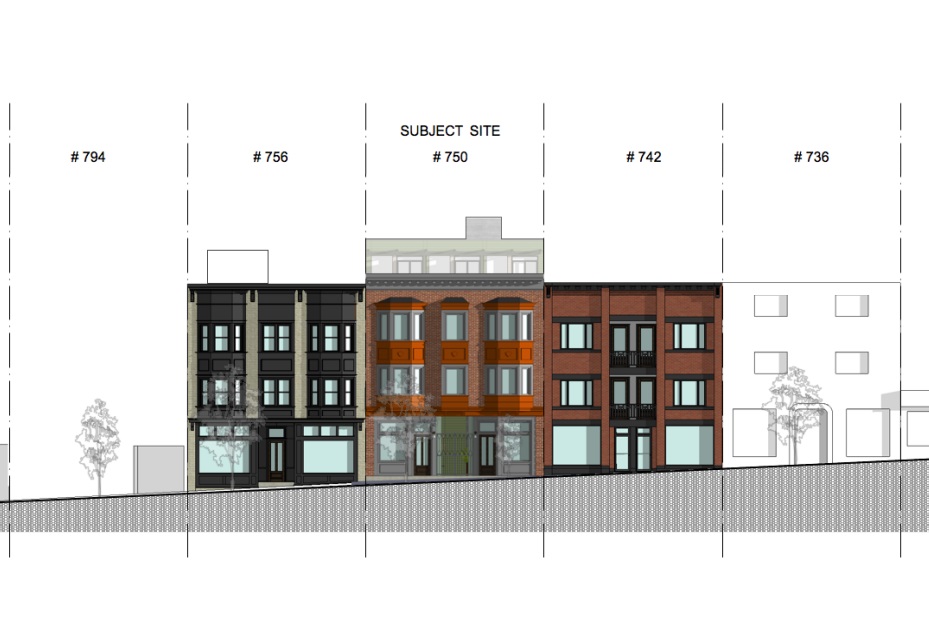BLDG Development (W. Laidler Sales Corporation) has submitted a revised application to the City of Port Moody for a site first pitched for a rental project in August 2019.
The 18,000 SF site is located at 148-154 James Road, just East of Moody Middle School. The 2019 proposal was for a 6-storey rental and condo building with 64 conventionally sized units and a density of 3.14 FAR.
The modified application would keep the 6-storey building form, but would include the following:
- 114 units (92 strata, 22 rental);
- 66 studios, 43 one-bedroom units & 5 two-bedroom units;
- Average units sizes of 359 SF for studios, 472 SF for one-bedrooms;
- a reduced total density of 3.0 FAR;
- 68 parking stalls.
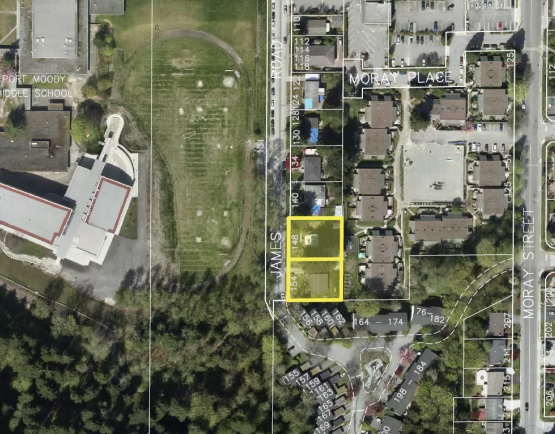
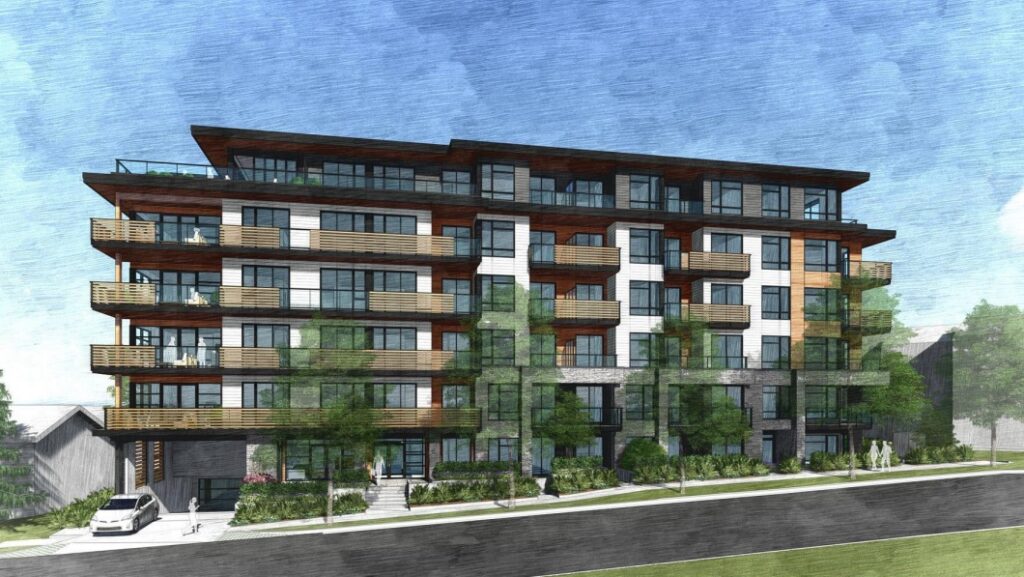
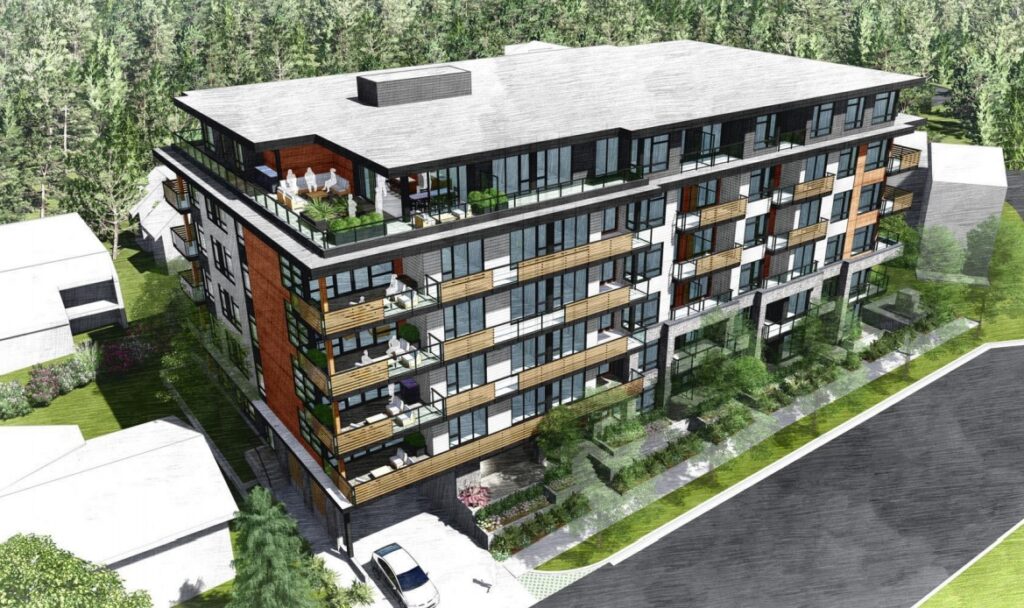
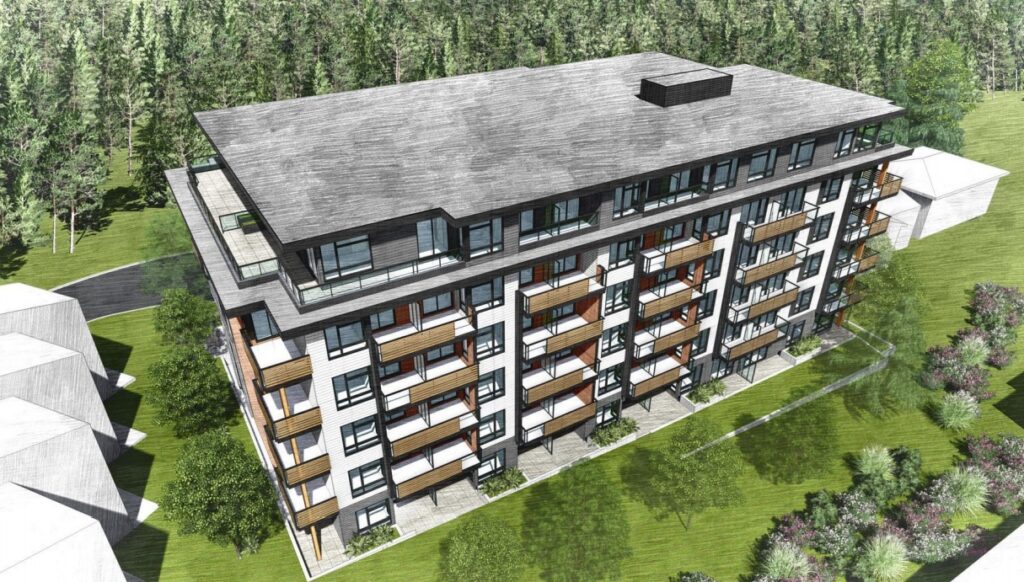
In a unique model, the project would contain “a total of 22
rental units (for a period of ten years) and 92 strata units. Of these units, 11 rental units and 11 strata units would be reserved for lower income earners who earn less than $51,000 per year.
The 11 strata units would have a restriction on resale for two years. There would be no restrictions placed on the remaining 11 rental units.
Although a total of 11 rental and 11 strata units would be reserved for persons earning less than $51,000 per year, it is unknown at this time whether the rental rates or purchase prices would be reduced to an amount that would be considered as below-market or affordable housing. As a
reference, the BC Housing 2019 Housing Income Limits (HILs) rates would suggest a monthly rent of $1,288 for a one-bedroom or studio unit, but likely does not take into consideration the smaller micro dwelling style units, as proposed with this project.“
In addition, a pre-release of the units would be available for and marketed specifically to:
- persons earning less than $51,000;
- persons aged 65 years and older;
- persons with mobility challenges;
- families where two generations are seeking to reside in separate units in the same building; and
- persons who qualify for BC Housing’s Shelter Aid For Elderly Renters (SAFER) program.
The architect for the project is Integra Architecture.
The project is at the Community Planning Advisory Committee and would require referral back to Council for approval.


